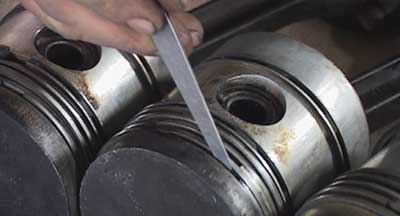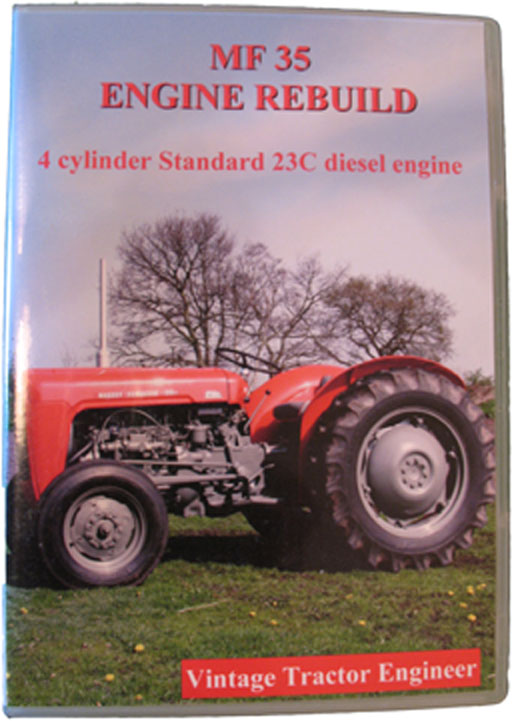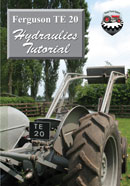Want to check out our tractor maintenance videos? Click here to see what we've got!
The Problem
We recently had a message from Jock who has been getting white smoke and misfire when the engine is ticking over (Perkins 3A.152). The engine had recently been rebuilt with a crank re-grind, head skim and piston/liner replacement.
When hot and working hard the engine runs fine, seems to have sufficient power and burns clean with no white smoke. The valve seats have been re-cut, but only a DIY job without new inserts or guides. Jock adds that the cam is a bit worn with occasional pits and that he has tried adjusting the timing on the pump advance, but without making much difference.
Jock also asked about the heads you can buy for around £200. Are they any good or would we suggest renovating the original head.
The Cause Of The Smoke
White smoke is usually unburnt fuel.
One common reason for this at low revs (but no white smoke at high revs) is dribbling injectors. This is called low speed hosing, as they don’t cut off cleanly and cause smoke from the unburnt fuel. We have even experienced this with new injcetors and have had to re-grind them on the Hartridge Injectomatic machine to re-finnish the angle at the bottom of the nozzle and the needle.
The needle needs to be at 30 minutes (ie. half a degree) different to the seat angle, otherwise the injector spring cannot exert sufficient pressure on the point of sealing to create a sufficiently tight enough sealing pressure (as the spring pressure is spread out over too large an area if the angles are not exactly 0.5 degrees different.
Think of two cone shaped objects (one inside the other) coming together to create a seal. The outer cone is the nozzle and the inner cone is the needle. If they are cut at exactly the same angle (or worn so they are now at the same angle) they will try to seal along the whole length of the cones. Whereas if they are at slightly diferent angles then the inner cone will seal just at its tip. So not only is there more spring pressure applied to this point, but also the circumfrance of the sealing surface is much smaller (at the cones point) and so less sealing area so leak. Hope that makes sense!
It may be worthhwhile for Jock to take the exhaust manifold off and then start the engine. You should be able to see which cylinder is producing the white smoke (if it is one particular cylinder rather than all of them). The two front cylinders come out of the one front hole, but you can sometimes differentiate between the two front cylinders if you look carefully enough.
Personally I rarely think that cutting valves by hand is good enough. If the original head is serviceable then I would definately go for new guides and seats in your original head rather than the new £200 one. When you see the valves and guides serviced at an engineers it can be observed that they take some considerable time and care over the job.
If you turn the engine slowly with a starting handle you can actually hear if the valves are leaking (exhaust and inlet manifolds removed).
Low Compression Causing Unburnt Fuel
It is possible that anything which causes low compression can cause incomplete burning of the fuel, as the diesel engine works by compression ignition.
For that reason, Jock should also look at the condition of the valves.
However, given the symptoms of white smoke only at low revs then VTE thinks that the injectors would be the first thing to look at.






hi. seen prob similar before. provided injectors and pump have been done, and depending on the job done on them, sometimes the leak back wont work on the injectors for a while. what happens is the pump is working at peak efficiency, and the injectors are very tight. theres too much diesel being delivered to injectors but the leak back cant work so it gets forced into the cylinders. it will wear out after a few hours hard work but dont leave it ticking over as this can make the prob worse. just a thought
Hi there
I need a set of injectors for a 35
Can anyone recommend a supplier.
Is is better to replace rather than refurbuish injecotors ?
Thanks Joe